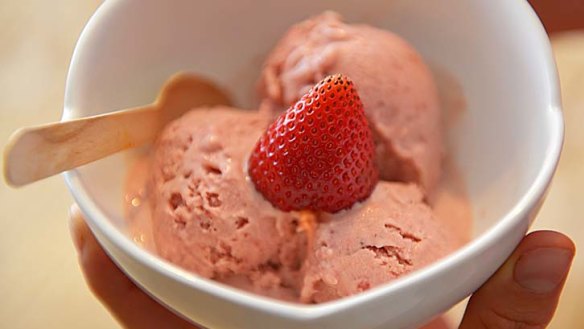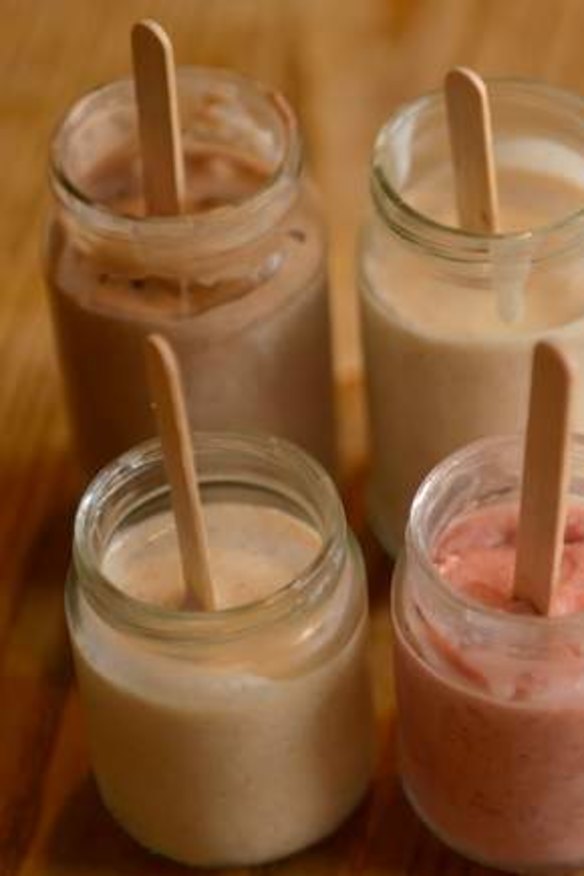Ice-cream with a healthy twist
The healthiest way to enjoy ice-cream during the hot summer months is to make your own, writes Arabella Forge.

It’s that time of the year again where we hover around the freezer and to try to resist the urge to slurp, lick or spoon from a tub that special whipped concoction of cream, ice and sugar.
However, when I recently reached for a tub of an old favourite at the supermarket and turned it around, I found a list of ingredients that included many complex abbreviations. Sadly, my old favourite contained an extensive array of thickeners, colourants, emulsifiers, flavourings and a handful of synthetic fatty acids.

Undefeated, I bought a cheap ice-cream maker online then made my way instead to a local food store to buy some basic ingredients to make ice-cream at home.
The main challenge in home-made ice-cream making is creating a smooth textured product, with a sweet flavour and luxurious mouth-feel that is not too icy – the type of texture and sense of creaminess that makes people swoon and say ‘oooh’ and ‘aaah’ and toddlers scream and protest for more.
Here are my tips.
Skip the sugar: Many ice-cream recipes contains up to 15-20 per cent table sugar, corn syrup and glucose syrup. These sweeteners add a sugary flavour to ice cream and also work as anti-freezing agents, which prevent the texture from becoming too icy.
A healthier alternative is a natural, unrefined sweetener such as maple syrup or raw honey, which can be used in a smaller proportion to conventional sugar. You can also use fresh fruit for sweetness and flavouring.
In addition to a sweetener, you will need a natural stabiliser or emulsifier to achieve a good, smooth texture. Alcohol also works as an anti-freezing agent, so small amounts can be used to the same effect.
Keep it smooth: Most commercial ice-creams use a variety of stabilisers and thickeners (usually gelatin and vegetable gums), which increase the viscosity of ice-cream. As an alternative, try a binding agent such as arrowroot powder (which comes from the trunk of the tapioca tree) to achieve a good texture.
Whip it: While traditional ice-cream was mixed using egg yolks and butterfat, newfangled, industrial ingredients are now added to ice-cream in an effort to cheaply mimic natural, simple ingredients.
Emulsifiers works to bind together immiscible substances such as fat molecules and water, which gives ice-cream a perfectly smooth, non-icy texture. The original emulsifier for ice cream was egg yolk, and they were used in abundance. French recipes dating back to the 17th century call for up to 20 egg yolks per pint of milk.
Today, a variety of modern emulsifiers can be found in ice-cream such as E471 (a synthetic fatty acid made from vegetable oil or animal fats), E407 (carrageenan derived from red algae) or E477 (which is a combination of propanediol (anti-freeze and natural fats). Many brands, which choose to reduce their fat content, do so by adding skim milk powder and additional thickeners and stabilisers to compensate for the reduction in natural fat content.
Use real ingredients: It might sound obvious, but many commercial ice-creams don’t contain the basic, real ingredients required for good quality ice-cream such as fresh fruit, full-cream and free-range egg yolks. These ingredients are not hard to find. In my view, good quality fruit-based ice-cream should contain a minimum of 40 per cent of its volume in natural fruit.
Package and store it properly: Ice-cream should have little contact with air as it can oxidise on the surface. You can add a layer of grease-proof paper under the lid for added protection.
For individual icy-poles, try storing ice-cream in recycled glass jars with wooden icypole sticks. It’s a neat and easy way to serve them at dinner parties.
Here are some recipes to try:
Strawberry Marsala Ice-cream:
3 cups fresh strawberries
300ml full cream
1/3 cup maple syrup
2 tsps Marsala
1/4 tsp vanilla essence
2 egg yolks, whisked
1 tbsp arrowroot powder
Directions:
Puree together the strawberries in a food processor. Once pureed, they should make at least two cups. If you don’t have enough, add more fruit and puree again.
Sprinkle in the arrowroot powder to avoid clumping, then add the remaining ingredients, one at a time and mix well. Transfer to an ice-cream maker and churn according to manufacturer’s directions.
Frozen Honey Yoghurt:
3 cups natural (unflavoured) yoghurt
1 tsp cinnamon
2 tsps arrowroot powder
3 tbsps honey
1 tbsp maple syrup
Directions:
Whisk together all ingredients in a large mixing bowl (pictured above). Transfer to an ice-cream maker and churn according to manufacturer’s directions.
Arabella Forge is an accredited practising dietitian, food writer and author.
What are your home-made icecream tips? Jump on the comments and share them here.
The best recipes from Australia's leading chefs straight to your inbox.
Sign up